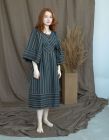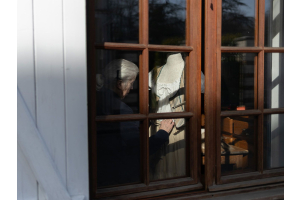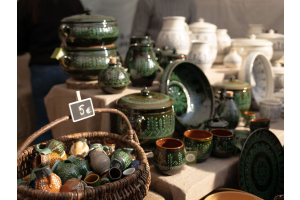We use cookies to make your experience better. To comply with the new e-Privacy directive, we need to ask for your consent to set the cookies. Learn more
Protective Doll DIY
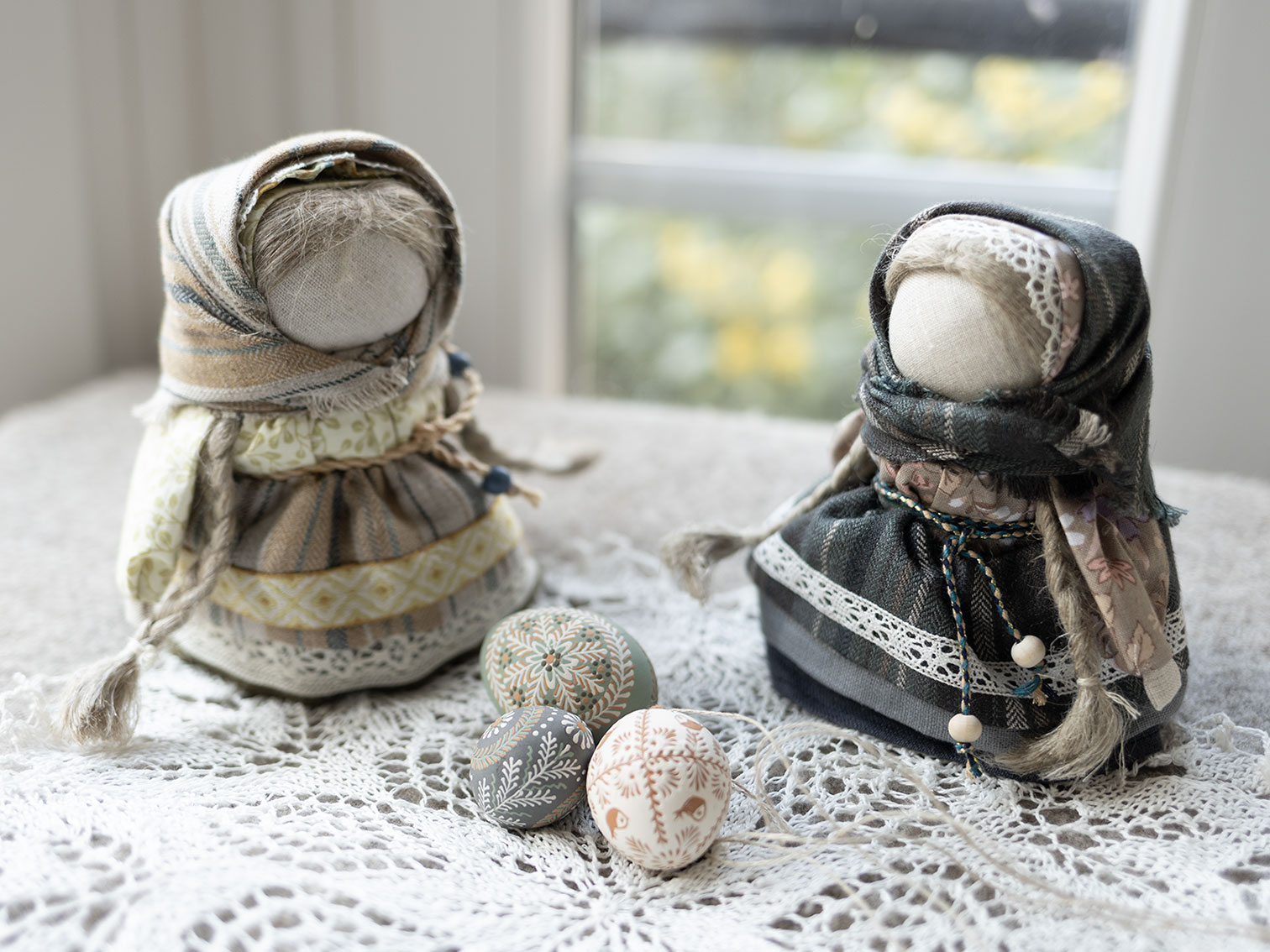
Protective Dolls: Origins and Meaning
Protective dolls, known as motankas in Ukraine or bereginyas in Slavic tradition, are ancient handmade talismans. Found in various traditional cultures, they have long been used as good luck charms and amulets for the protection of family and home.
In Slavic culture, these faceless dolls were crafted from natural fabrics, wrapped and tied without sewing or needles, as it was believed that piercing the fabric with a needle would break its protective energy. The lack of facial features was intentional: it was thought to prevent malevolent spirits from entering the doll and to ensure it embodied only positive energy.
Each doll held a specific meaning and was often created for a particular purpose, such as protecting a child, ensuring marital happiness, bringing prosperity to a household, or warding off the evil eye. Some were given as gifts for weddings or births, while others were used in prayers or as a way to make wishes.
Today, these dolls continue to captivate with their simplicity and spiritual significance. They are not only unique, handcrafted objects, but also silent guardians of ancient traditions, preserving a rich cultural heritage full of meaning and emotion.
These dolls are typically categorized into three types in Ukraine: ceremonial (obryadova), guardian (berehynya), and children’s play dolls. The ceremonial dolls were created for specific holidays and were named accordingly, such as Kolyada, Vesilna, Vesnyanka, Paschalna, Kupavka, and more.
Guardian dolls were made with particular purposes in mind, such as ensuring a successful pregnancy, promoting health and well-being, or bringing wealth, harmony, and happiness. It was common to place healing herbs and coins inside these dolls for added protection.
Since each doll served a specific purpose, they were given names that reflected their roles. For example:
The Ochysna (cleansing)
was meant to rid the house of bad energy.
The Desyatyruchka (ten-handed)
was believed to help the hostess with household chores.
The Kapustka (cabbage),
displayed in the window, was believed to bring success in marriage.
The Knyahynya (princess),
the most popular female talisman, aided in family matters.
The Nerozluchnyki dolls (inseparable)
were often given as wedding gifts to ensure lasting love.
The Narechena (bride) ,
the most beautiful, symbolized a long married life with its long braid.
The Rodyuchist (fertility)
was given to wish for many children in the family.
The Podorozhnytsya (traveler)
was thought to guarantee a safe return home
and keep the traveler warm and nourished during their journey.
The Pelenashka (swaddle)
was place in the crib by mothers to protect babies from illness.
Sometimes breadcrumbs were wrapped inside these dolls,
and they also served as pacifiers.
Additionally, 12 small motankas made of healing
herbs were given to children to play with. These dolls absorbed the illness
and were burned once their protective role was fulfilled.
The Berehynya (guardian)
represented the Mother—symbolizing care, love, and prosperity.
It was depicted with a covered head, large breasts, and a cross on its face.
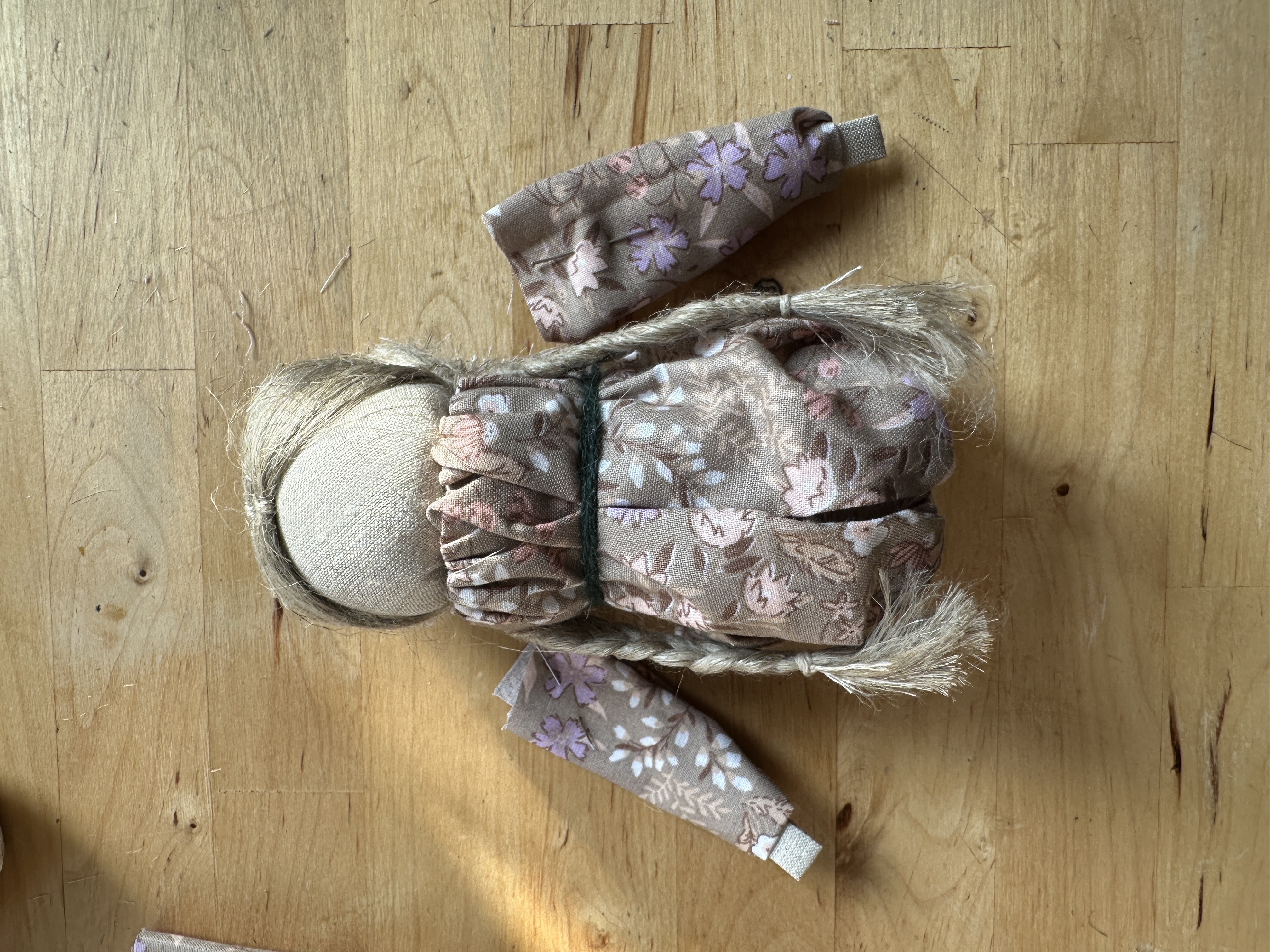

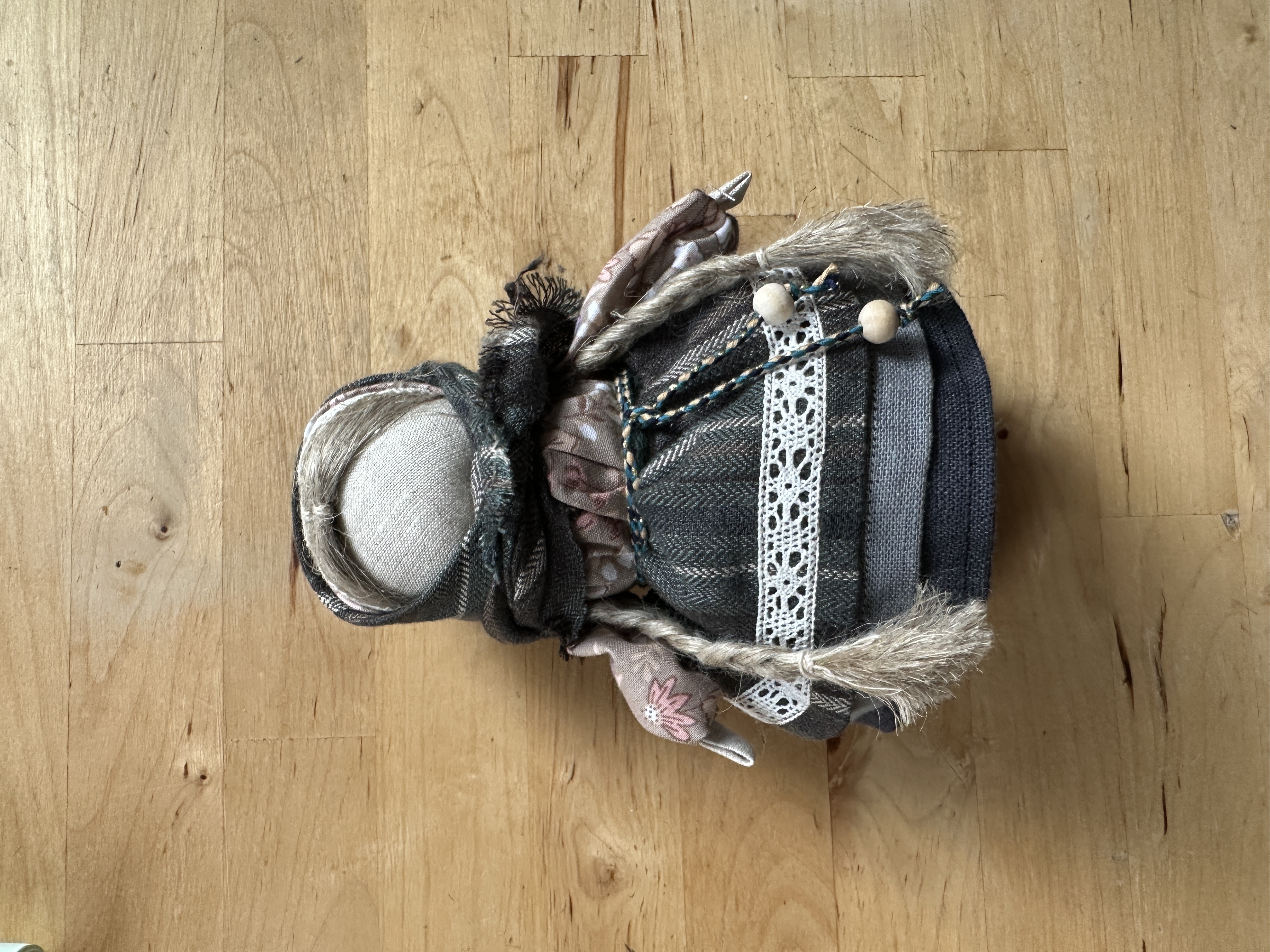

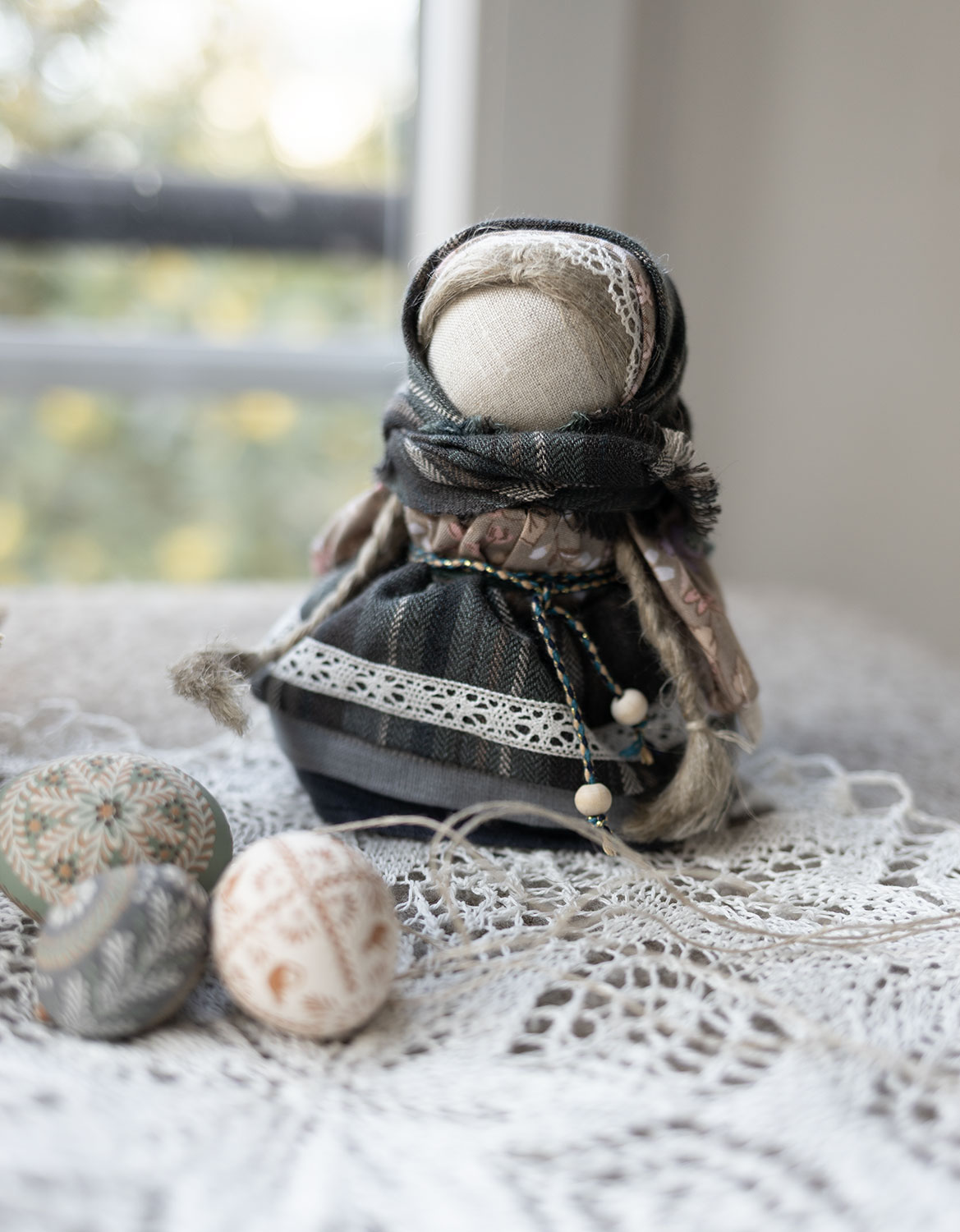

Protective doll DIY
Materials needed:
• Birch log – we couldn’t find birch so it was Apple tree… (12-14 cm in height, approximately 2.5 cm in diameter)
• Linen fabric (width equal to the log’s diameter, length approximately 1 meter)
• Cotton wool for stuffing
• Linen fabric (20x20 cm)
• Linen fabric strip for hands (approximately 2.5x10 cm)
• Colored cotton fabric for the dress (several pieces of 10x30 cm in your favorite patterns, for layering)
• Cotton fabric for the shirt (15x20 cm for the body, 10x10 cm for one sleeve)
• Linen fibers for the hairstyle (length according to the doll’s size)
• Cotton fabric for the headscarf (half of a 30x30 cm square, cut diagonally)
• Cotton fabric for the undercap (half of a 15x15 cm square, cut diagonally)
• Cotton lace for decoration (length depending on the doll’s size)
• Buttons, charms, beads for decoration
• Cotton or linen yarn
• Strong threads
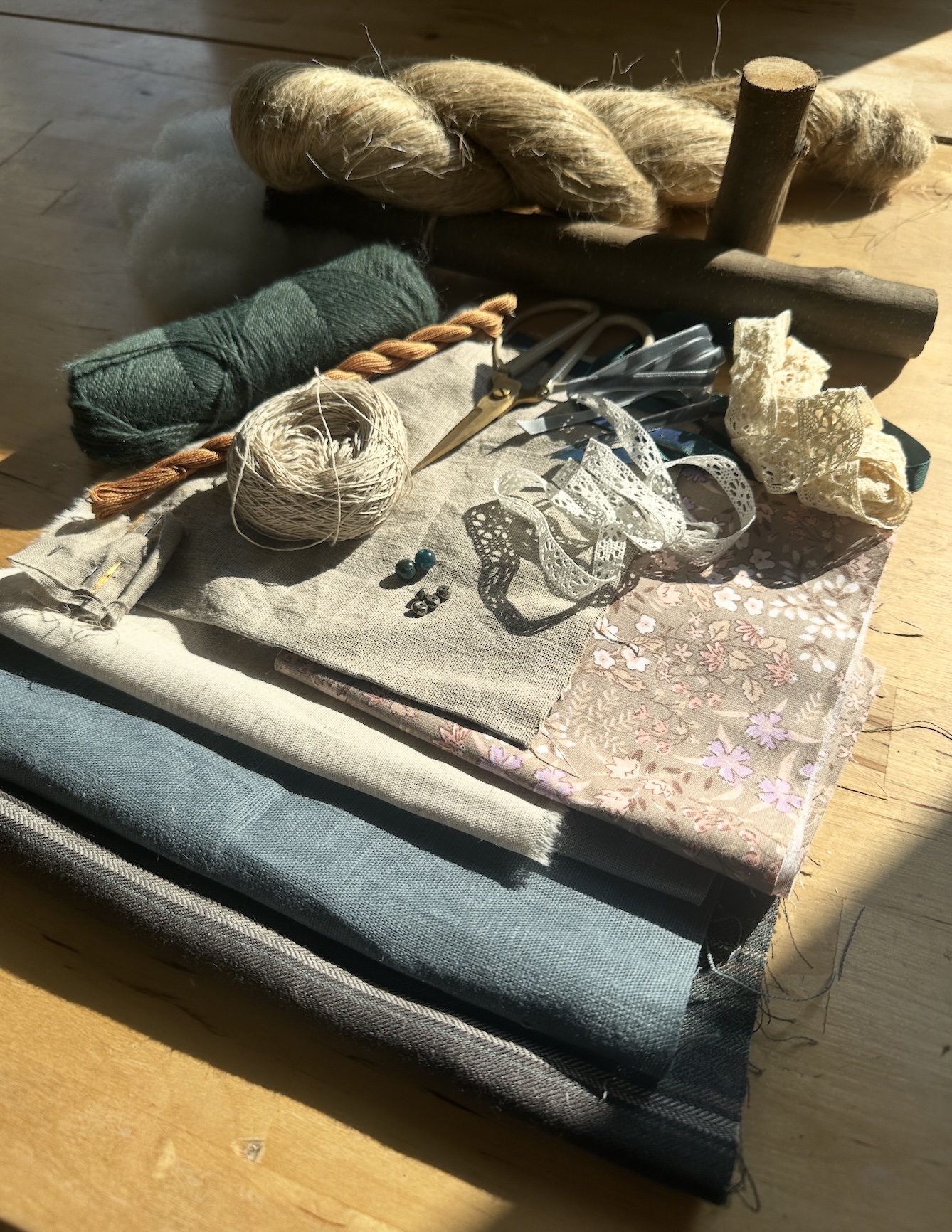

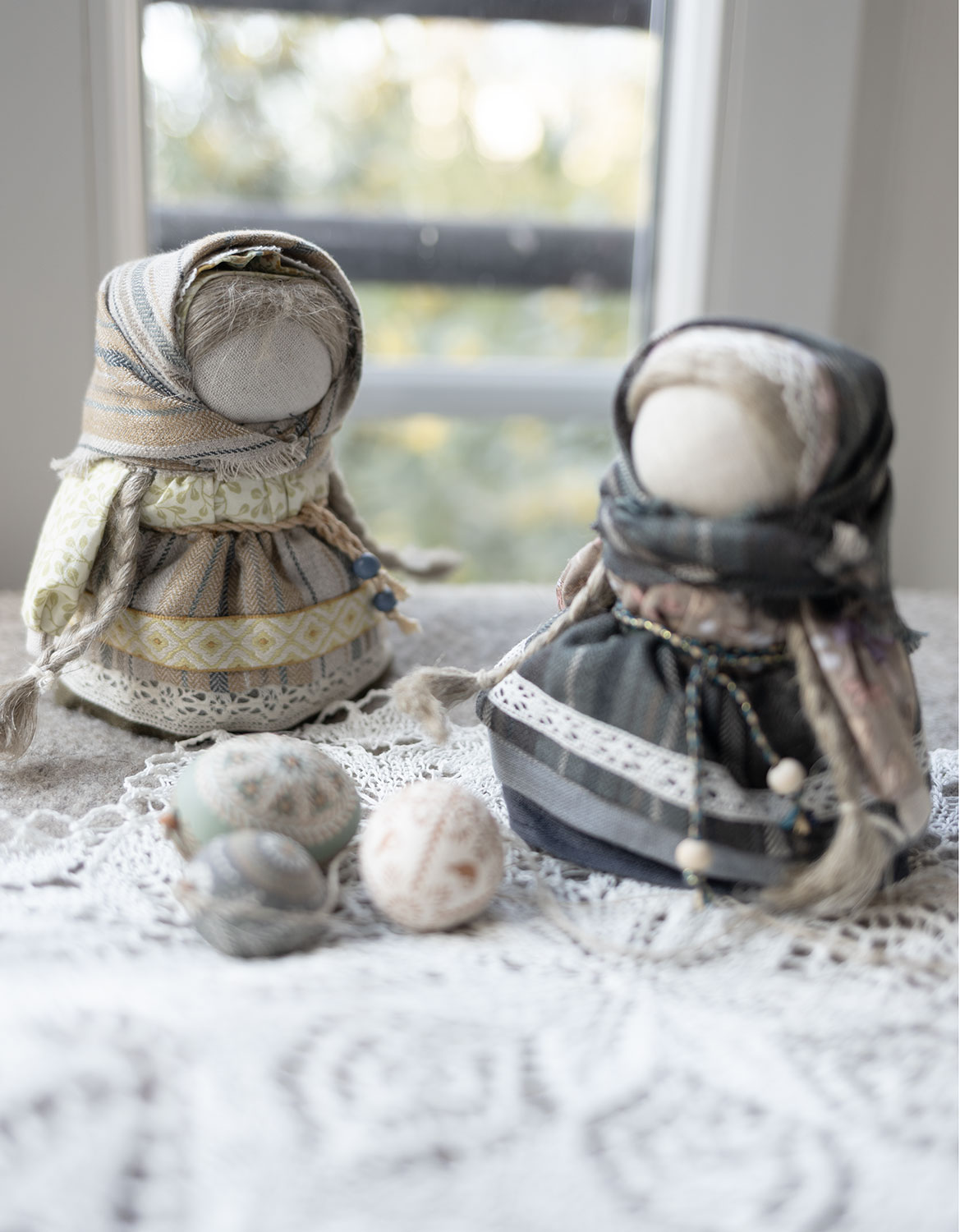

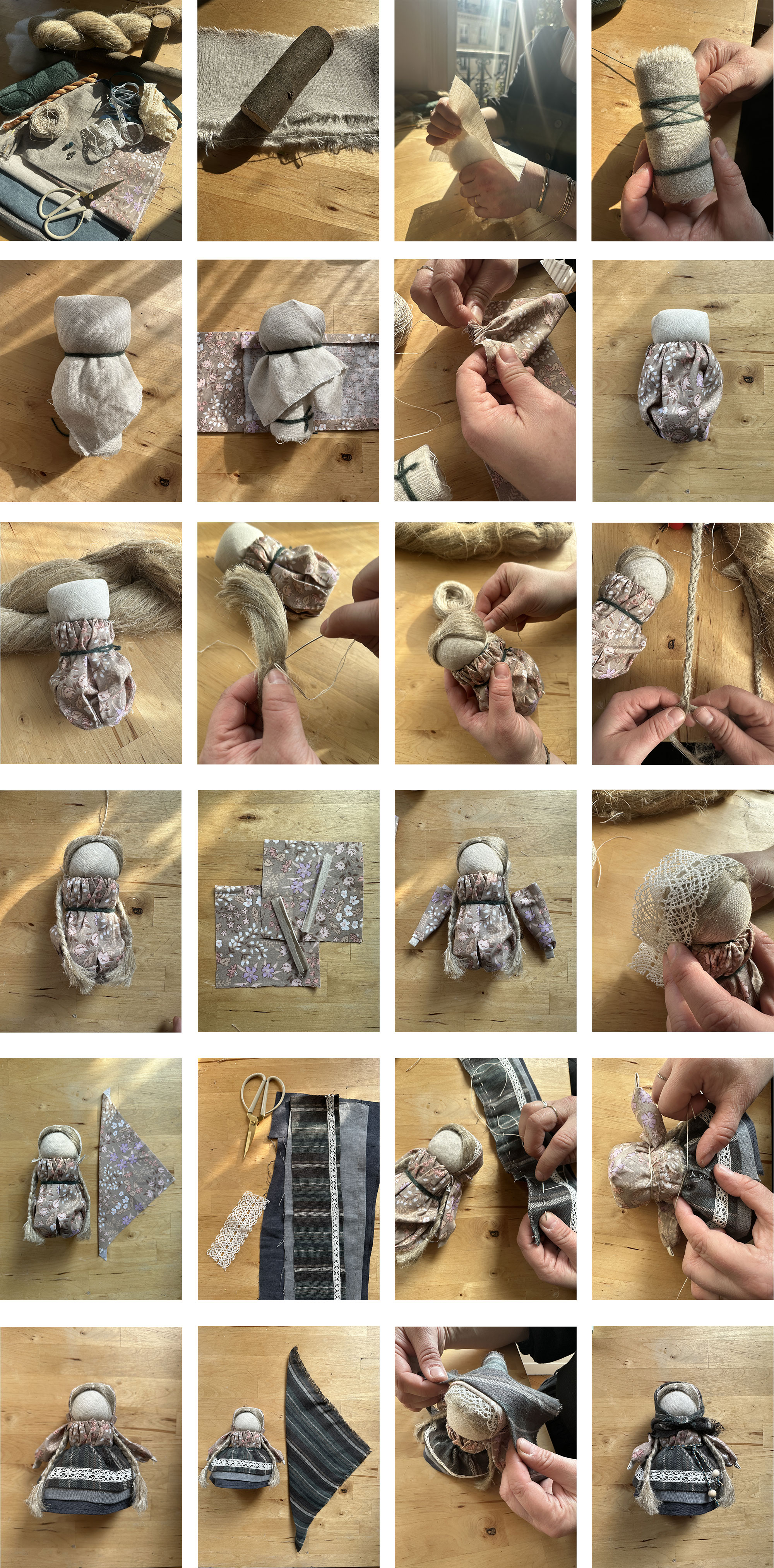

1. Create the doll's base:
• Wrap the linen fabric tightly around the birch log, securing it at the bottom with strong thread. Wind the fabric clockwise (sunwise) and tie knots to keep it in place.
2. Shape the head:
• At the top of the log, mark where the neck should be and create a protective cross using strong threads.
• Place cotton wool at the top of the log to form the head.
• Cover the cotton wool with the 20x20 cm piece of linen fabric, folding the edges back to shape the head.
3. Make the shirt:
• Cut a rectangle of linen fabric (approximately 10 cm in height, twice the log’s circumference in length).
• Fold both sides of the fabric by 0.5 cm and sew to hide the raw edges.
• Attach the fabric around the body from the neck to the bottom of the log, securing the upper part at the neck and the lower part at the feet with stitches.
4. Create the hairstyle:
• Cut the linen fibers to the desired length for braids.
• Attach the fibers to the head, braid them, and secure the ends with thread.
5. Make the hands:
• Fold the 2.5x10 cm strip of linen into a tight roll to form the hands.
• Secure the ends with strong thread.
• For the sleeves, fold the 10x10 cm fabric to form a sleeve. Attach it inside out, and once both sleeves are done, secure them with thread at the neck.
• Attach the hands to the body just below the neck, securing them with thread.
6. Add the headscarf and undercap:
• Place the triangular undercap (cut from a 15x15 cm square) on the doll’s head and tie it at the back.
• If desired, add a lace layer for an elegant touch.
7. Dress the doll:
• Cut several rectangles (10x30 cm pieces) of colored fabric for the skirt.
• Layer the fabric pieces over the shirt to create a multi-layered skirt. Secure each layer with thread.
• Ruffle the skirt and attach it at the waistline with extra stitches.
8. Finish the doll:
• Cover the head with the headscarf (cut from a 30x30 cm square, folded diagonally) and tie it securely under the chin.
• Use cotton lace to decorate the dress and sleeves as desired.
• Add buttons, beads, and other decorative elements to enhance the doll’s appearance, such as a belt made of string or lace and some precious charms
Protective dolls dolls are not just decorative items, but carriers of ancient traditions and deep meanings. By creating your own protective doll, you take part in preserving this rich heritage filled with symbolism and spirituality.
May your creation bring you protection, well-being, and prosperity, just as it was intended by your ancestors !




